Aviation watchdog JonNYC reports that American Airlines will improve the wifi on their Boeing 777-200 fleet and will give the planes a new interior. That’s great news.
The old Panasonic wifi systems on these planes are exceptionally slow, while ViaSat’s systems work much better and the rest of the industry is moving to fast universal internet. American is introducing free wifi for customers in 2026 – but only on ViaSat and Intelsat systems, not Panasonic. So moving away from Panasonic should also mean that free internet eventually extends to these aircraft as well.
American’s fleet of 47 Boeing 777-200s, all delivered between 1999 and 2006 (with 45 delivered by 2003) has two different business class seats today.
- There’s the ‘Concept D‘ seats which I find quite comfortable, and where some are backward-facing, but that don’t have working dividers between center seats, and some seats share a track so that movement by one passenger can shake another.
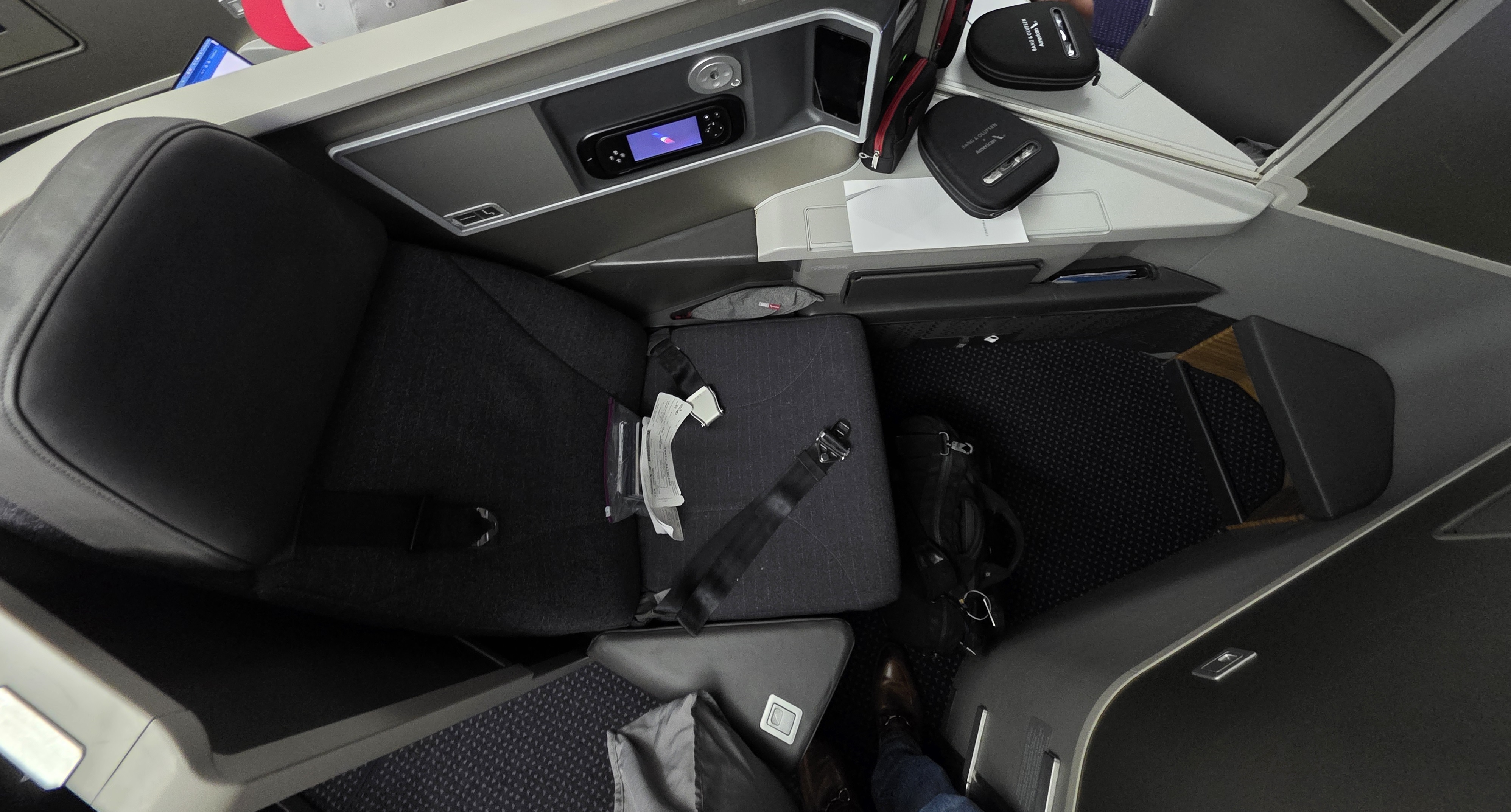
- And there’s the Super Diamond seats which are also comfortable, but fairly generic, and lack the privacy and style on American’s latest business class suites with doors.
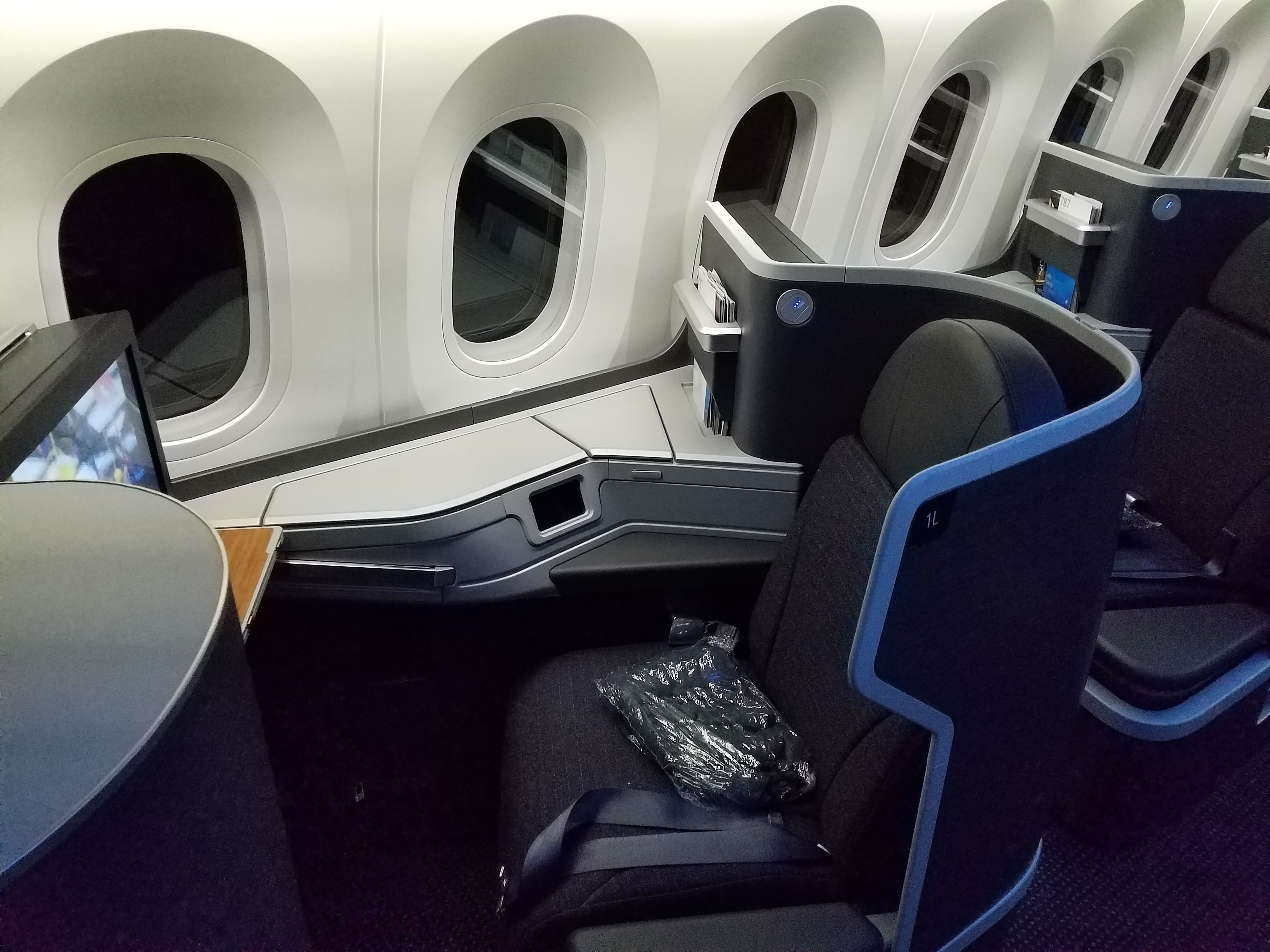
JonNYC says that the wifi replacement will begin a year from now, and interior program will start “later on” though I expect it to be pretty soon thereafter (though these programs slip all the time).
AA:
So fall 2026 the 777-200 start get their Panasonic WiFi replaced with Viasat. 777-200 to get interior retrofit later on
— JonNYC (@xjonnyc.bsky.social) September 17, 2025 at 2:48 PM
There’s been speculation about a widebody aircraft order, though I wrote earlier this summer that while “they need to make a decision on their older Boeing 777-200 fleet” I may in among the minority that’s “expected them to keep these planes.” Three years ago their top executives said it would take a situation where “the world changes” for them to think they needed the Boeing 787-10.
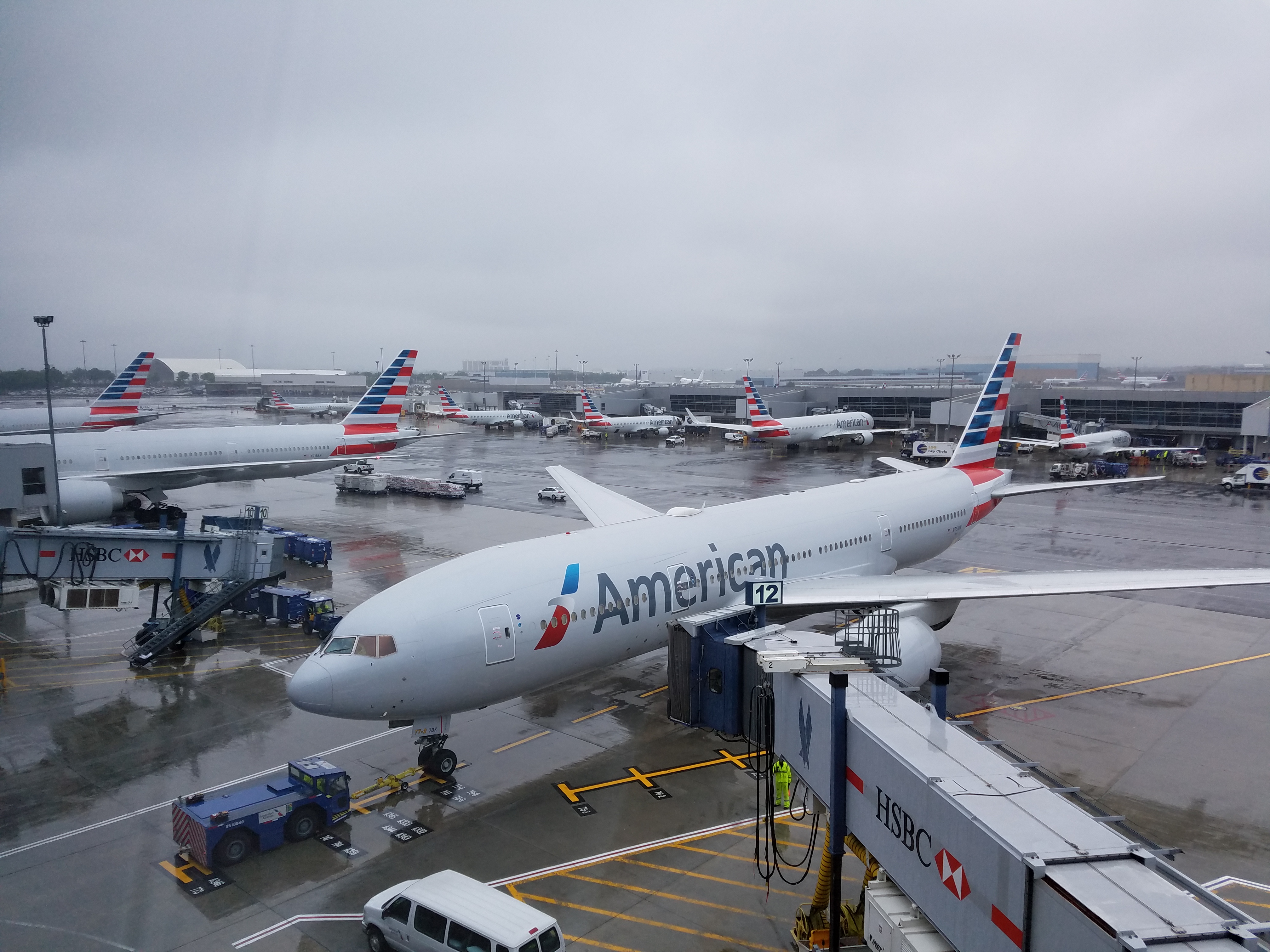
I take two things away from retrofits to the Boeing 777-200s.
- They aren’t retiring the planes (readers of this blog shouldn’t be surprised, I’ve written that they wouldn’t retire more planes this decade)
- which suggests some widebody growth rather than merely using existing Boeing 787 orders as replacement aircraft.
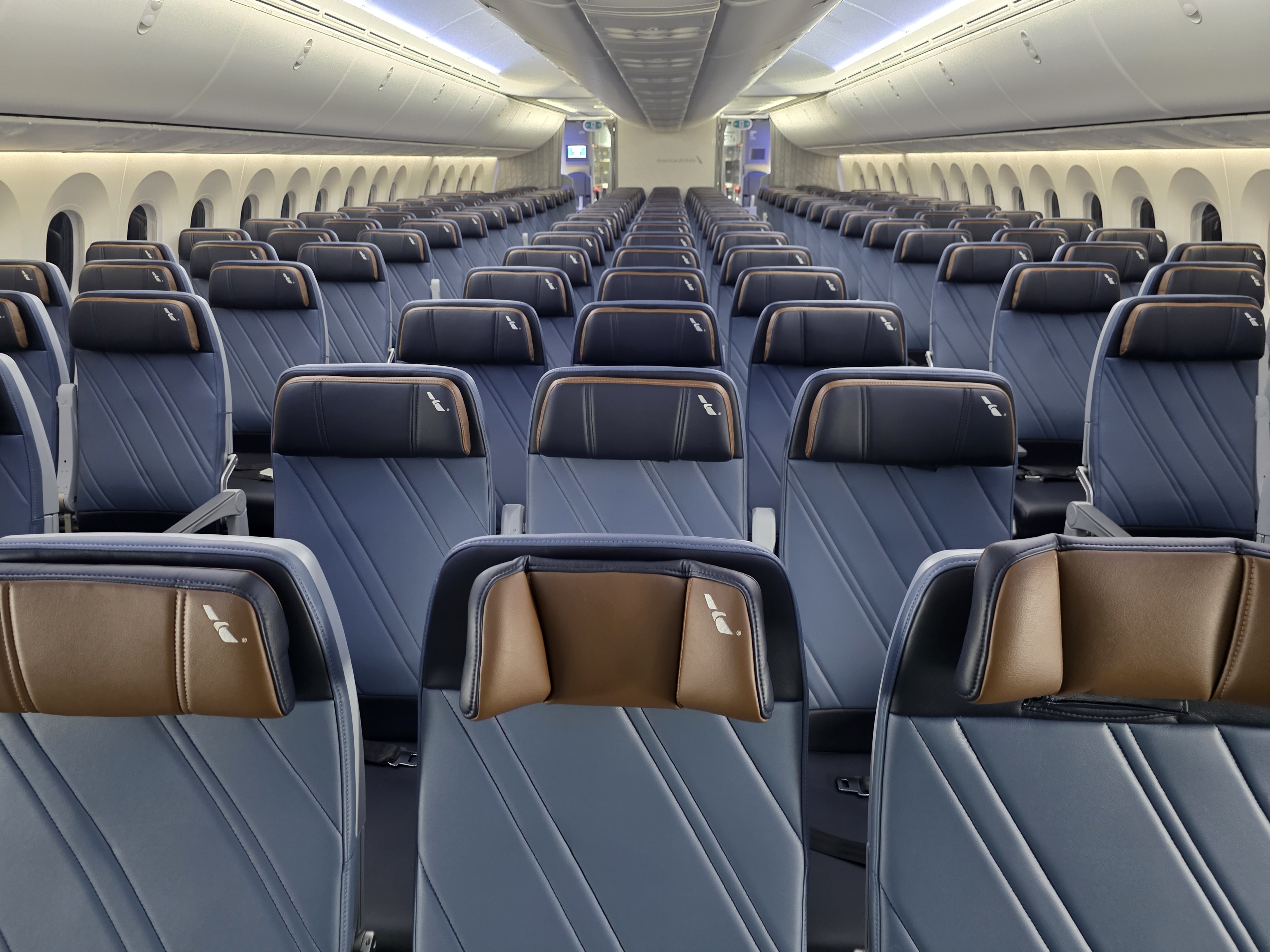
American has been largely allergic to widebodies, preferring greater frequencies with narrowbodies than carrying more passengers at lower per-passenger cost (if the plane fills) using a larger aircraft.
And American has been short on widebodies. They haven’t been able to fly to as many long haul destinations, even where that’s been the places customers have wanted to travel, because they retired too many planes (Boeing 757s, 767s, Airbus A330s) during the pandemic which were capable of these missions.
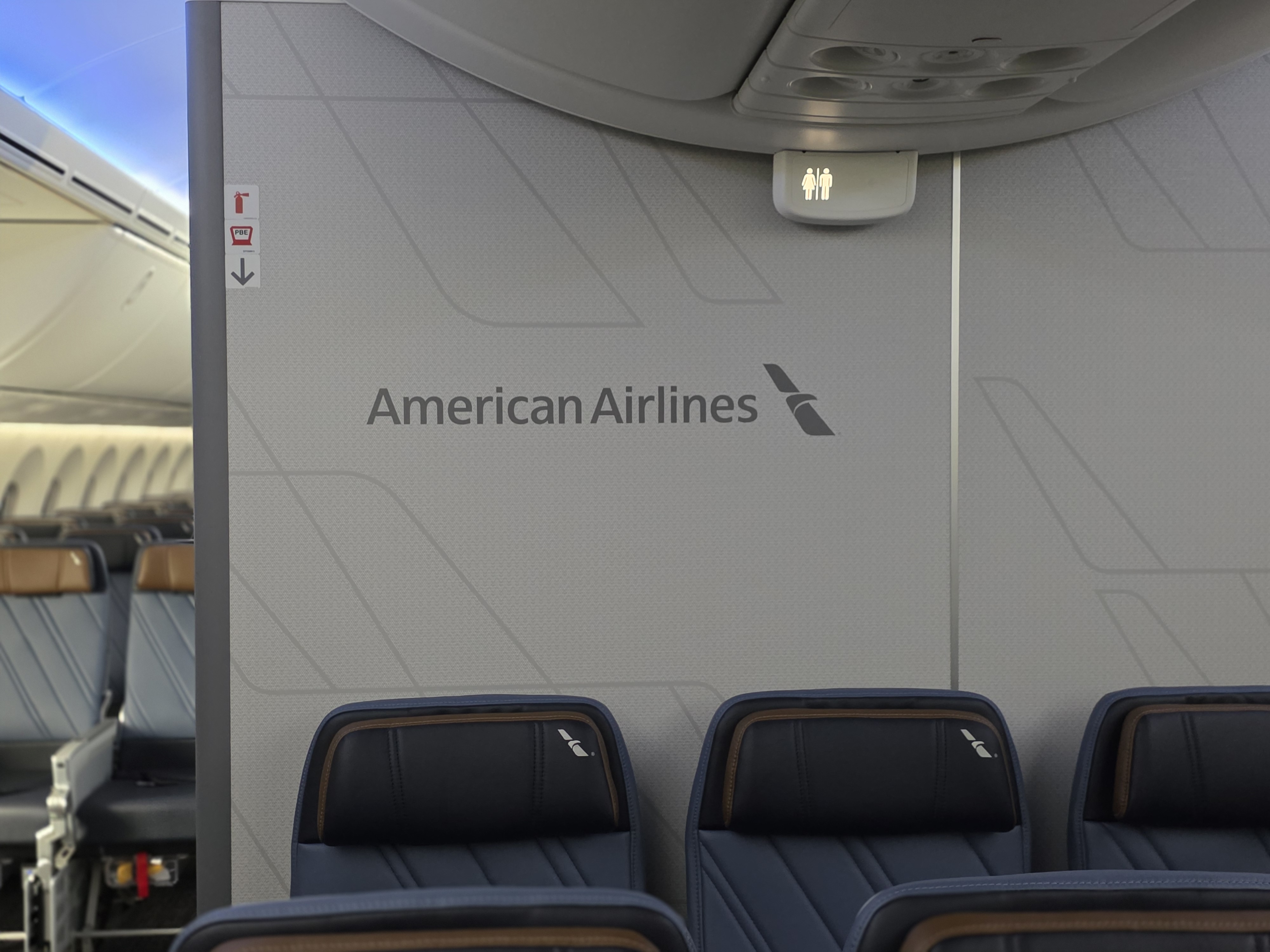
It looks like American will improve these planes and give them a new lease on life rather then replacing them. That’s great, I really like the Boeing 777, and I especially like the new interiors that American has on their recently-delivered Boeing 787-9s and which are planned for Boeing 777-300ERs.
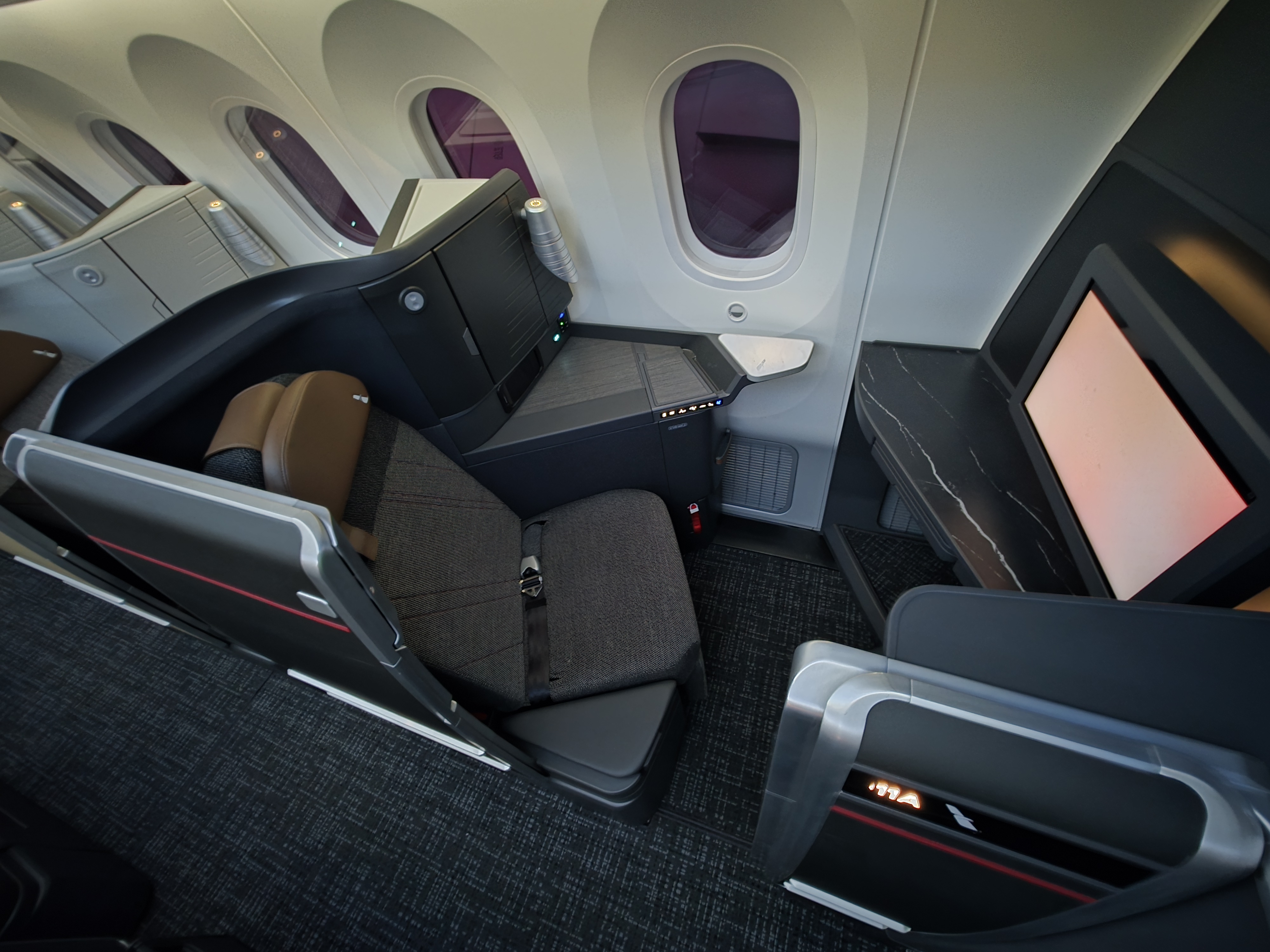
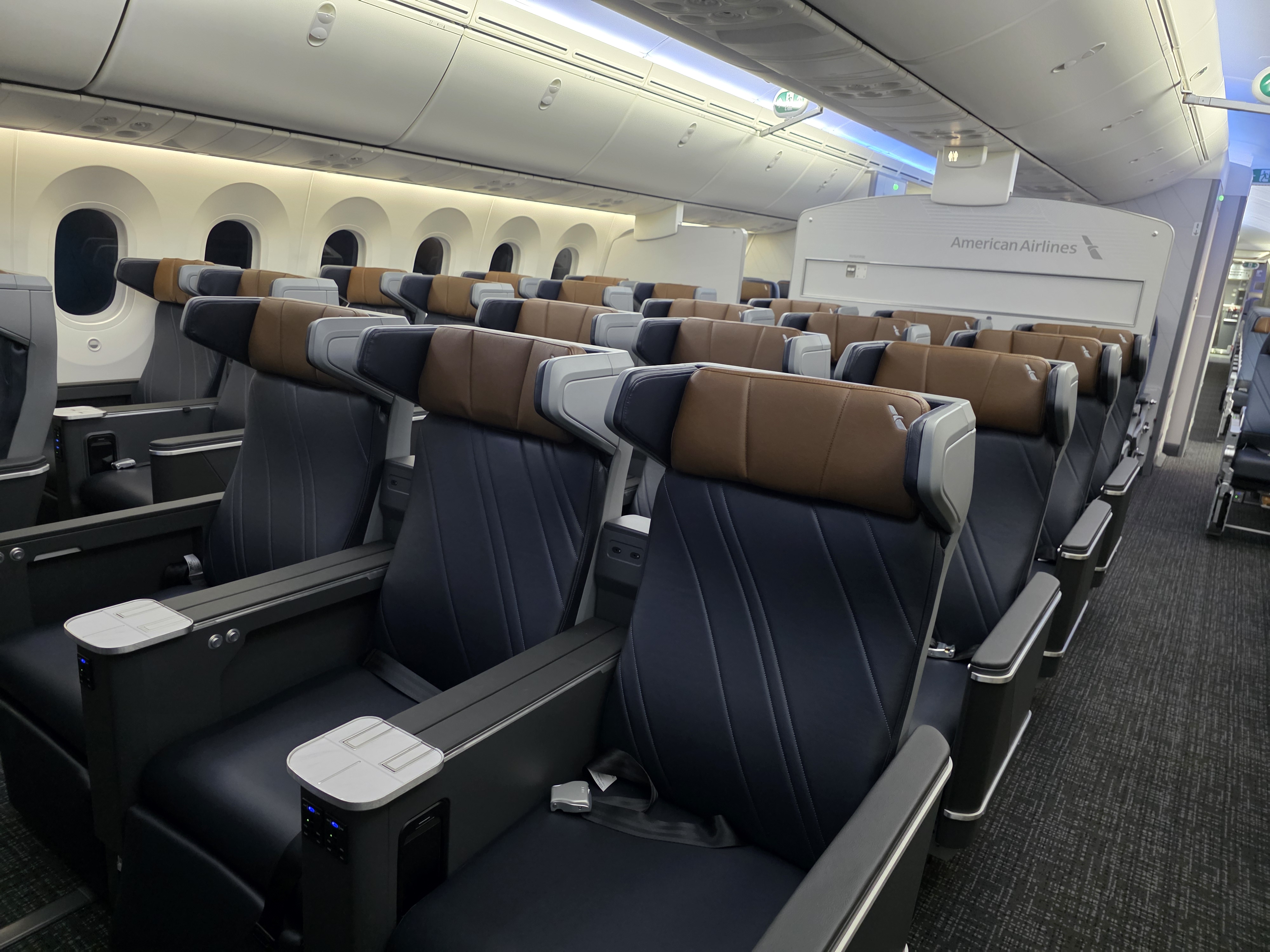
Until now we hadn’t seen plans to retrofit existing aircraft with these interiors. American would have a very premium business class (and premium economy) on a handful of aircraft, and outdated interiors on most of their planes – limiting their ability to capture the brand value and customer excitement over flying American Airlines in a premium class of service.
And while the performance of American’s Panasonic wifi that’s outfitted on most of their widebody planes today has improved from true unusability, it’s still not nearly as good as ViaSat which is on much of their fleet (and neither comes close to Starlink, which United and Alaska will be equipping on their planes).
I still wonder if we’ll see a widebody order. In summer 2023, CEO Robert Isom told employees that he wasn’t concerned with planemaker orderbooks and how backed up they are – that American is a big enough customer, manufacturers would make room for them. But extending the life of the 777-200s takes the pressure off of that claim somewhat.


The more Flagship Suites the merrier!
Agree 1000%. This is fantastic news for AA. While I think the A350 is tops right now (and we can all reserve judgment on the 777X if it ever arrives), I greatly prefer flying on a 777 over a 787. Thrilled they are now retrofitting both the -300s and the -200s. Will of course take years.
Good call, Gary. It’ll be interesting to see what configuration they’ll go with for the new interiors.
Any idea if they will change the configuration from the 37J, 24W, 66Y+, and 146Y?
Given the shift to premium this seems like a ripe opportunity to add more J, W, and Y+ and cut back on Y which has struggled a bit across the board.
I thought the 777’s that fly LAX-LHR were due for upgrade to ViaSat by end of year? Is that no longer the case?
@Jeremy — At this rate, maybe they should copy Le Compagnie and just do all J. It’s truly the ‘be there, will be wild’ of commercial aircraft configurations.
I’m floored. New Business Class seats are an investment made for typically a 10 year lifespan – based upon past refits. Given the work will start in 2026, that means the aircraft would be in the neighborhood of 33-35 years old when they are retired (given the 10 year seat investment). If it were Delta making this call it might make sense – but I’ve not noticed AA in the past to fly aircraft past 25 years of age.
Pretty sad that AA expects us to do transcontinental flights of 6 hours in narrowbody aircraft. I pay a premium price for first class and am miserable on MIA LAX with no seat recline, no foot rests and no IFE. I know streaming is available on cell but really hard to watch movies on a 2×4 inch screen. First class is always full and most of us willing to pay the higher fare for a widebody.
Just flew LAX MIA on redeye and could hardly walk after sitting in that awful seat! AA could be the best airline if they had better airplanes. I hope they bring back the wide body on MIA LAX!
@Helen — Oh, wow, you aren’t kidding; MIA used to have several wide-bodies a day between MIA-LAX, like 787, 772, and sometimes even the 773. I had taken each when I was based in SoFla. Now, just 737 and a321, even for the redeyes. Oof. Just awful. (@Parker, yet another reason I’m glad to be outta there.) Major downgrades. Perhaps, it’s seasonal, and they know to down-gauge during hurricane season. Best alternative for actual lie-flat is probably jetBlue outta FLL or MIA to LAX in their Mint product. Far superior to AA’s recliners.
Now if they change their mind and install IFEs on mainline fleet, that will be perfect
Fuel prices will stay low whether some people like it or not.
AA could further strengthen its balance sheet by not spending $5 billion plus on replacing evenpart of the 777 fleet.
The real question is how extensive of a refurb they do; if it is their new product, the planes will likely be in service until 2033-35 which would make then about 35 years old when they are retired.
Well, that settles it… if Tim thinks this is a bad idea (for Delta, because one of its competitors will soon have a better hard product), then it’s probably a good idea for AA! No anecdotes here.
That settles it… if Tim says AA shouldn’t do it, then it’s probably a good idea, because Tim’s thinking of how this helps or hurts Delta, and I’d imagine a primary competitor having updated cabins isn’t good for DL…
Delta pays as employees more per employee than any of the big three. Delta employees generate more revenue per employee than any airline on the Earth.
Delta can afford the nice new planes. American can make do with the old stuff.
I’m not sure why my first one didn’t post, so I re-drafted it, but then it did, and yet, Tim, you made two replies. Sir, are you a bot? I know I’ve thought you might be a Texas oilman by the same name, but this… this would be a twist!
Good internet on a plane improves my experience wildly. If they ran ads saying they had the best free WiFi it would move the needle on paid tickets.
@ Tim — Sounds like these renovated 777s will be vastly superior to having 44 upright business seats on an A321XLR. It’s a good day for AA!
@Gene — Is Tim a bot?
**Delta**
Always avoid
@ 1990 — Likely.
@Gene — Well, at least Delta corporate is getting its monies worth. Bah!
@Gary, You hint that the 777-200 will have the same seats as the retrofitted 777-300ERs, but don’t say that in the post.
While I believe that would be the best outcome, it could be that AA will sh*tcan the concept D seats and use the Super Diamond (which is a great platform, and yes, ubiquitous) removed from the -300s in the -200s.
I’d also like to see the 787-8 and -9 all get the new cabins sported by the -9P
17 inch wide seats in coach probably means I will never fly in these 777s but I still think that this is the right move. These airplanes probably had several years that they were underutilized during Covid-19. I like the 777s in 9 wide coach configuration.
“Delta pays as employees more per employee than any of the big three. Delta employees generate more revenue per employee than any airline on the Earth.”
Cute thing to say if you ignore Delta’s oil refinery revenue and how Delta doesn’t own as many regionals as others. The real truth is that Delta employees lose the most money flying passengers vs AA and UA. PRASM vs CASM doesn’t lie. But Delta employees sure do benefit from credit cards, there is no doubt about that.
“Delta can afford the nice new planes. American can make do with the old stuff.”
Says the perennial defender of the ancient and not updated 763 and the oldest fleet of the US3. Your hypocrisy is pretty funny. At least AA is updating their interiors. Delta couldn’t even be bothered with the 763s they keep flying. Hell, they couldn’t even be bothered for YEARS with their brand new A350s from LATAM.
Gene,
you do realize that DL isn’t buying the XLR but rather the simple NEOs for its transcon narrowbodies?
and the 321 has wider seats than the 777 in 10 abreast or 787 in 9 abreast.
DL’s 777s were 9 abreast for the widest widebody seats in economy in the US carrier fleet – but they went bye bye.
Max,
airline revenues do not include the refinery.
the real truth is that all profitable US airlines lose money flying just passengers.
You and others think DL is the loser when it gets the most revenue from non-transportation revenue of any US (and probably global airline).
Regarding fleet, the hypocrisy is that AA got rid of its 767s and 330s and are now going to end up w/ an older widebody fleet than DL ever had or will have in the next 10 years.
> the real truth is that all profitable US airlines lose money flying just passengers.
That is so not true! They sell a lot of prepaid travel to credit card companies (in the form of miles), and for archaic accounting reasons it shows up as a separate line item in their P&L. But at the end of the day practically all those miles are redeemed form flying, so it’s flying revenue!
@Mary quote: “They sell a lot of prepaid travel to credit card companies (in the form of miles), and for archaic accounting reasons it shows up as a separate line item in their P&L. But at the end of the day practically all those miles are redeemed form flying, so it’s flying revenue!”
A correct description of the money trail for miles accumulated by credit card spend. The credit card companies don’t manufacture those miles out of thin air, they buy them to credit to accounts for those who use their credit cards. Actual flying miles credited are paid for with higher ticket prices. The money that comes to airlines from airport concessions is also due to flying. If the airline isn’t flying passengers, there is no one at that section of the airport to by from the concessions.
Only took them how many years to learn from the DL 767 playbook?
If only they’d retained those A330s. Retiring those birds was one of the biggest strategic capacity missteps of the pandemic era.
of course, Mary.
The miles have no value w/o an airline behind them.
Some people just can’t admit that DL came up w/ the most valuable loyalty and credit card partnerships.
and AA, who is who we are talking about here, has lots of loyalty revenue in lots of medium and small cities but they have lost a lot of loyalty revenue in the top 3 cities in the US over the past 5 years.
@Tim Dunn — Beep, boop… (good bot).
I get that the NEO is a less expensive aircraft compared to the XLR (like $60 vs. $70 or $80 million per aircraft depending on the order), but wouldn’t Delta (or any airline that flies both long-haul international and transcon) want more XLR aircraft to have the option to route those birds, say, transatlantic from BOS-CTA-BOS, every other day, then be able to pivot BOS-SEA-BOS, overnight, if needed? Talk about connecting secondary hubs and more eclectic routes. Depending on the range, they might even be able to pull off JFK-OGG, instead of only flying to HNL. Just saying, XLR is more versatile, and may be worth the investment. If it’s just for transcon, fine, NEO’s got you covered. Either way, newer, more efficient, more capable aircraft, more premium, etc., on any airline is usually a good thing for everyone involved.
AA was near last to retire ancient 767s and will be last or near last flying 777-200s. Fine with me if they’re upgraded as they are more comfortable than flying on a skinnier 787 in most every way.
It should be noted why AA and other domestic fly narrowbodies with higher frequencies to fewer widebody frequencies – it’s easy to observe that this is economic behavior that is contrary to most of the carriers in the rest of the world. In those places, landing fees are set by slot usage – because any takeoff or landing utilizes roughly the same amount of airport/ATAC resources. In the USA however, airports and ATAC are owned by the government and pricing follows a Soviet model captured by rent seekers such that they are variable with the size of the plane – so that small private aircraft pay almost nothing for the same service that a 747 uses and pays through the nose. So it is perfectly rational for US carriers to use smaller planes, which cost them less in variable costs, rather than minimizing those costs through capital spending for larger aircraft.
what is the lifespan of an aircraft ? 40 ? 50 years ?
@McCaron — Pal, we still got B-52s from 1960s…
1990
DL says that narrowbody aircraft are too small to work for 8+ hour flights at today’s labor rates for US airlines which is why DL does not want the XLR.
Given that only a handful of global carriers intend to use the XLR for 8+ hour flights, there are more airlines that seem to agree w/ DL than not.
Mak,
US airlines use higher percentages of regional aircraft but the US has an enormous number of small cities compared to other markets and no rail service to much of the country. The economics of RJ service have deteriorated post covid but no US airline is willing to get rid of scope limited large RJs. DL led the industry in getting rid of small (50 passenger) RJs.
McCaron,
there are life limits for commercial aircraft based on flight hours and cycles (takeoffs and landings). Apparently AA’s 772s still have plenty of both left before even more expensive overhauls are required.
I think it’s a good move and since the 772s are a third of AA’s wide body, long-haul fleet, it might be their only option given the five year lead time for new aircraft. It would be interesting to see which planes they refurbish first. They might want to do the youngest ones first so they could park the older ones if the economy heads south or fuel prices rise significantly.
@Tim Dunn — One more: Beep, boop… (good bot). You are so diplomatic, good sir. I admire your restraint. A handful is still notable because they’re trying something new. I say, go for it.
Lord Have Mercy!
Does this mean AMERICAN is finally saying goodbye to the tired watered down Soviet-esque colour palette.
The new hard product looks smart, usable, sensible and most welcome.
Now, if we can dedensify Economy for flyers crammed back there, get the meal service and on-time performance in gear, we might have the beginnings of a premium national carrier.
Wow I miss the 757. On Delta, they had about 7% of the plane’s seating decked out in Biz class, which gave me a better chance to upgrade. Most planes and airlines ran about 3%. ANYWAY, the 777 was introduced in 1990. It’s just an elderly widebody, tweaked. 787 is much better, in my opinion, sorry if I offend anyone.
AA should return the daily wide body, a 787-8, between ORD and PHX. In particular during Jan-April, this plane would be filled as it always was.